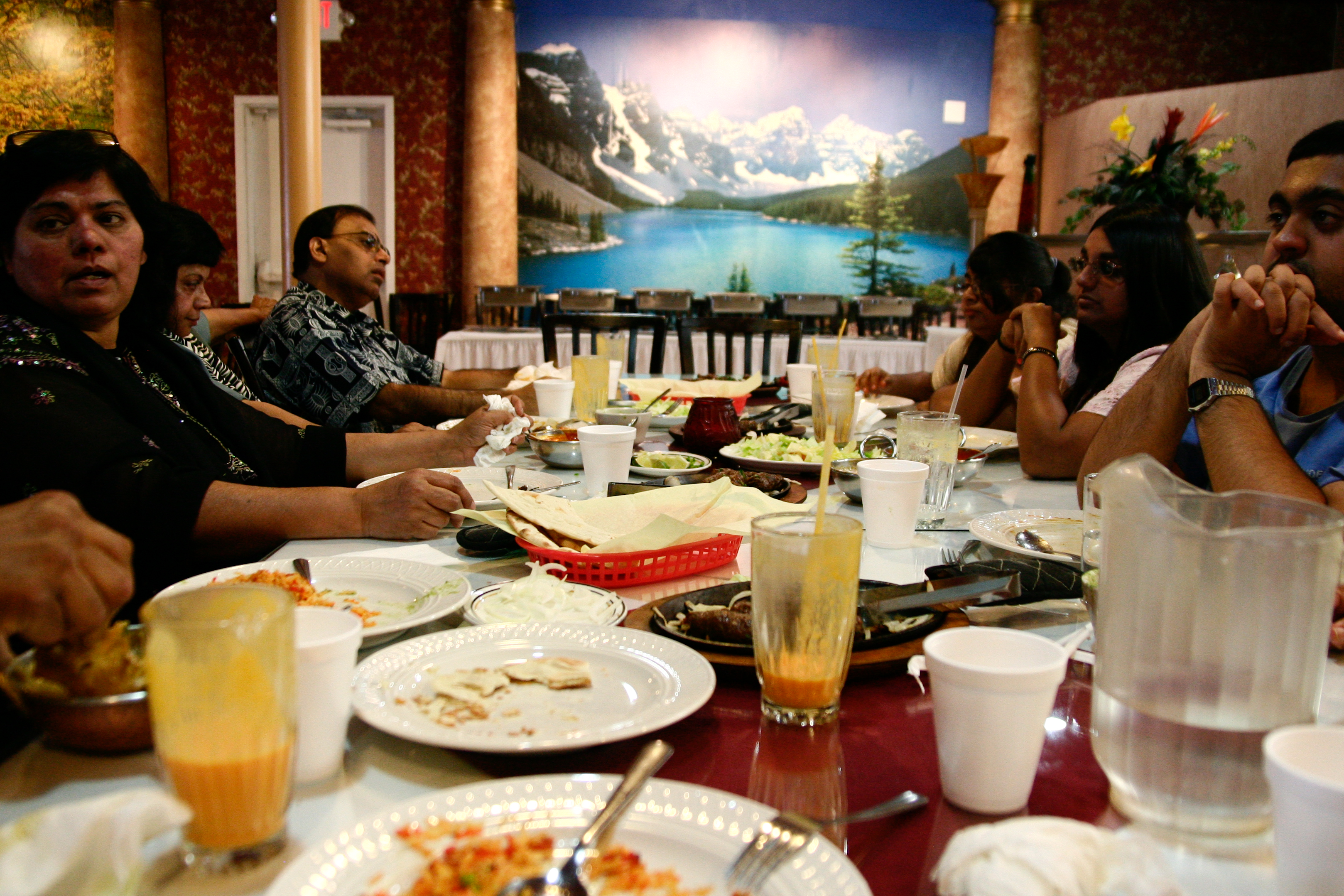Treatment for disordered eating should be informed by personal identity struggles that are deeply embedded in specific social, political and economic contexts.
 The meaning of food in India reaches beyond the role of supplying nutrients to the body as it is constitutive of human relationships and of one’s identity. : Asim Bharwani CC BY-NC-ND 2.0
The meaning of food in India reaches beyond the role of supplying nutrients to the body as it is constitutive of human relationships and of one’s identity. : Asim Bharwani CC BY-NC-ND 2.0
Treatment for disordered eating should be informed by personal identity struggles that are deeply embedded in specific social, political and economic contexts.
“Look how thin she is, she is so weak, so thin (bahut kamjori, bahut patli hai), she should see a doctor.” This was a common refrain among Maya’s family and her co-workers.
Maya was a young pharmacist working in a remote village in rural north India, determined and proud. Her personality contrasted sharply with her shadow-like figure, thin wrists and sunken cheeks. She was commonly dressed in huge, fluttering suits and her waist appeared almost non-existent.
Understanding ‘not eating’ among young women in India is a challenge. Often, food refusal is automatically associated with eating disorders as described in Western psychiatry, which uses diagnostic labels such as ‘anorexia’ or ‘bulimia’.
Eating disorders have been closely associated with the ‘thin ideal’ found in many Western cultures, but a case like Maya’s — embedded in a non-Western context — indicates that the underlying causes are more complex.
I first met Maya while volunteering for a health-oriented non-governmental organisation that Maya worked in. The family members, friends and co-workers I asked about the origins of Maya’s condition put the responsibility on Maya’s character and behaviour. Her father claimed the most important reason for her weakness was that she was alasya, too lazy to prepare food for herself on time.
Her sister said Maya’s “anger (narazgi) is eating her organs from the inside”. A friend accused her of using her phone too much; she must have become sick due to radiation. Maya’s mother, however, was one of the rare people who did not say anything about the reasons for her condition. When asked, she shrugged her shoulders and quietly said “pata nahi“, I don’t know.
In India, food tells stories of social relations that may serve to support caste and class distinctions or express love and care, or disagreement and conflict between family members. Commensality, or the details of who eats what, when, where, shared with, and prepared by whom, has been found to be constitutional to personal identity in terms of age, gender and caste.
Food practices may sustain these categories, but also reveal how they may be dynamic and permeable. The meaning of food in India reaches beyond the role of supplying nutrients to the body as it is constitutive of human relationships and thereby, of one’s identity.
While food and eating practices are of paramount importance in India, disordered eating among Indians is still poorly understood, despite an increasing interest from scholars.
While many theories try to explain the origin of eating disorders, lay and professional literature have assigned high importance to the Western ‘thin ideal’, the glorification of a slim figure that is spread through mass media. Recently, scholars in India have also reported a significant correlation between social media usage and abnormal eating behaviours.
Disordered eating is much more than a quest for a perfect physical shape. Although Maya was not isolated from television and movies, her troubled eating had little to do with the thin ideal. On the contrary, her thinness was unacceptable to people in her broader surroundings.
While investigating ‘not eating’ further, I discovered that Maya’s condition was multifaceted and impossible to gloss over with a single label such as anorexia. The impact of the cultural environment in which Maya was grounded was significant to the degree that the term ‘eating disorder’ — so closely associated with the Western psychiatric diagnoses — felt inappropriate.
Most importantly, Maya’s ‘not eating’ was related to conflicting expectations women may experience during significant social, political and economic changes around them. Disordered eating has been linked to social transitions such as transnational migration, modernisation and urbanisation.
Dr Anne Becker has argued that disordered eating is “a symbolic embodiment of the anxiety and conflict the youth experience on the threshold of rapid social change and during their personal and collective navigation through it”.
For months, Maya led the life of a young, educated, unmarried female professional living by herself in a very remote village where the expectations of young women were very different: girls were not expected to receive education beyond middle school but to marry as soon as possible. Additionally, Maya was a member of the Brahmin caste, a different caste than the villagers.
Because of this, she raised suspicion among the villagers who preferred to avoid her. Yet, within Hindu ideology — to which most people in Maya’s surroundings ascribed — sharing residence and food with other people are key to the creation and maintenance of one’s personhood. Living alone and without anyone to share her food with left Maya deeply affected and not interested in preparing and eating food by herself.
Disordered eating is therefore much more than the pursuit of thinness. Social upheavals, such as the arrival of a consumer society or a new socio-political system, may cause a crisis of identity for people, arising from the contradictory pressures of changing norms and expectations.
Maya found herself in the battlefield between the convictions of the local community about how women should behave to preserve their ‘good character’ and the expectations of her employer, an NGO which followed Western work practices.
Disordered eating is importantly related to struggles of personal identity which are deeply embedded in such specific social, political and economic contexts of the person in question. This key understanding should inform any treatment of disordered eating.
While interest in studying eating disorders is increasing, such contexts can be best understood through qualitative research. In-depth ethnographic studies are crucial to improve the understanding and treatment of disordered eating in South Asia and elsewhere.
If this article has raised issues for you, or if you’re concerned about someone you know, visit https://findahelpline.com/topics/eating-body-image or contact your local health provider.
Dr Tanja Ahlin is a postdoctoral researcher at the University of Amsterdam, studying health, family care and digital technologies. She is the author of Calling Family: Digital Technologies and the Making of Transnational Care Collectives.
Originally published under Creative Commons by 360info™.












